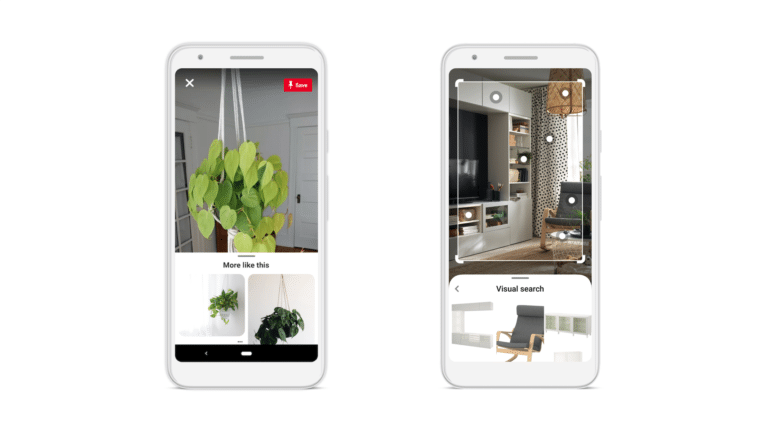
We continue to see a trend toward shoppability in eCommerce and social media, also known as social commerce. Once limited to upper-funnel marketing and brand exposure, these channels and apps are moving down-funnel to offer transactional functions around product placement.
This takes shape in buy buttons on everything from YouTube videos to Snapchat Stories. Social commerce beacons like Instagram also offer things like product tags. Brands and influencers are incentivized to add these tags which builds towards a structured shopping taxonomy.
Elsewhere – and for similar reasons – we see a separate trend: AR shopping, also known as “camera commerce.” This involves 3D product visualization to virtually try on everything from cosmetics to couches. It also includes visual search to identify and buy physical objects.
Panning back, these two trends – shoppability and camera commerce – are on a collision course. Point your phone at a jacket a friend is wearing using Snap Scan, then buy it right on the spot. This process compresses the purchase funnel through a visually-informed shopping flow.
In the DNA
When discussing image-based product discovery, one of the original players is Pinterest. Product inspiration and discovery were in its DNA long before it was popular in social feeds like Instagram. Now, with that visual shopping DNA, it’s blitzing AR to let shoppers visualize products.
For example, using the Pinterest Lens tool, shoppers can point their phones at real-world items to identify and find/pin them on Pinterest. And its “Try on for Beauty” feature lets shoppers virtually apply 14,000 cosmetics products. Usage has grown 34 percent in the past year.
Now Pinterest is expanding to furniture. Its latest feature lets shoppers visualize home decor in their space. This builds on Pinterest Lens and is available already for 80,000 shoppable pins from brand partners including Crate & Barrel, Walmart, West Elm, and Wayfair.
To use the feature, shoppers click on supported pins then choose “Try in Your Space.” After visualizing a given item, they can purchase it by clicking the pin again to be sent to a checkout page. Whether it’s footwear or furniture, it’s all about turning inspiration into purchase.
Features & Formats
Stepping back and looking at the progression of “cosmetics to couches,” it aligns with a key trend in visual shopping. As with Snap, it’s about moving from the front-facing camera to the rear-facing camera to augment the broader canvas of the physical world.
That evolution is important because it expands the use cases and product categories. Rather than products that can go on one’s face (lipstick, sunglasses, etc.), this extends AR shopping to everything from cars to coffee makers. And monetization expands with it.
Speaking of monetization, Pinterest isn’t charging its retail partners for transactions or affiliate revenue. It’s simply adding AR to boost stickiness and show more value to brands. This is meant to hook them in as advertisers that double down on Promoted Pins.
In other words, Pinterest is playing a long game. It sees 3D product visualization as a key part of its evolution as a visual shopping leader. In that way, AR fits its DNA. So expect more features and formats for AR shopping in high-value categories like furniture and fashion.
We’ll pause there and circle back in the next installment of this series to examine other tech giants establishing strategic positions at the intersection of AR and shopping. Meanwhile, see the full report here.

